
THE coastal strip of Northumbria between Morpeth and Berwickupon-Tweed enjoys a concentration and splendour of castles without European parallel. In the late Middle Ages, this was the so-called Middle March, a borderland between England and Scotland. Follow- ing the Union of the Crowns under James I and VI in 1603, some of these castles fell into magnificent ruin, such as Norham, Warkworth and Dunstanburgh. Others have survived as living buildings. One such—by the skin of its teeth—is Chillingham Castle.
The remarkable story of its recent rescue from the brink by Sir Humphry and Lady Wakefield has already been described by Jeremy Musson (COUNTRY LIFE, April 22, 2004). Against the odds, they have repaired the fabric and, with a shared interest in collecting and the Arts, turned Chillingham into a castle of curiosity and beauty, every room filled with eye-catching objects. Comparing the images of this article with those taken in 2004, it is possible to see how they have fur- ther consolidated their remarkable achievement over the past two decades.
Chillingham is first documented in the 12th century as a possession of the powerful Vesci family, lords of Alnwick. There is no evidence that a castle existed here at this date, but there must have been a residence by September 1255, when Henry III paused at the site on his travels. His son, Edward I, also stayed there, in 1298. The property was subsequently mortgaged in the 1320s by its then owner, one Nicholas Huntercomb, to a certain Thomas of Heton, who quickly assumed control of it. In 1329, Thomas entailed Chillingham first on his eldest son—who died soon afterwards—and then on an illegitimate son, another Thomas, a settlement that was twice contested, in 1345 and 1352.
Esta historia es de la edición February 07, 2024 de Country Life UK.
Comience su prueba gratuita de Magzter GOLD de 7 días para acceder a miles de historias premium seleccionadas y a más de 9,000 revistas y periódicos.
Ya eres suscriptor ? Conectar
Esta historia es de la edición February 07, 2024 de Country Life UK.
Comience su prueba gratuita de Magzter GOLD de 7 días para acceder a miles de historias premium seleccionadas y a más de 9,000 revistas y periódicos.
Ya eres suscriptor? Conectar
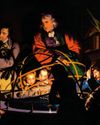
A leap in the dark
The primal play of light and shadow, whether in Leonardo's ever-so-subtle sfumato or Caravaggio's dramatic contrasts, has shaped Western art, as Michael Hall reveals

Beauty and the blimp
Inflammable airships may be gone, but a new hybrid aircraft, capable of delivering eco-friendly aviation, is set to take to the skies with a bang, finds Charles Harris
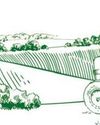
Three wishes for food and farming
Royal hedge planting, the terrible toll on Ukrainian farming and a maiden speech
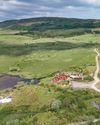
Seeing the wood for the trees
Scotland's much-evolved forestry industry has become a focus for clever investors

Let's fall in love
Birds do it, bees do it, even educated fleas do it. Laura Parker finds that, when it comes to creatures mating for life, persistence, patience and a little dad dancing are key to success
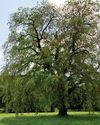
Back from the dead
THREE Wentworth elm saplings have been planted in the grounds of the Palace of Holyroodhouse, Edinburgh, and on the Highgrove estate in Gloucestershire-29 years after what was thought to be the lastknown Wentworth elm died.

A man among men
What makes a master? Beloved of the commercial art world, handled warily by art historians, the word has long been opaque. Michael Prodger investigates its many meanings-and discovers that being male confers an unfair advantage
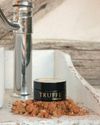
Unearth one of life's luxuries
Black diamonds are a girl's best friend this Valentine's Day, with Périgord truffle-based skincare from TRUFFE

Adventure awaits
Spend an unforgettable family holiday on the Benmore Estate and experience some of Scotland's finest wildlife and sporting activities

Let the art rule the head
Despite being a world leader in everything from jewellery to fashion and music, the UK is failing to nurture creativity at school and in regional centres. Tristram Hunt, director of the V&A Museum, calls for an urgent review